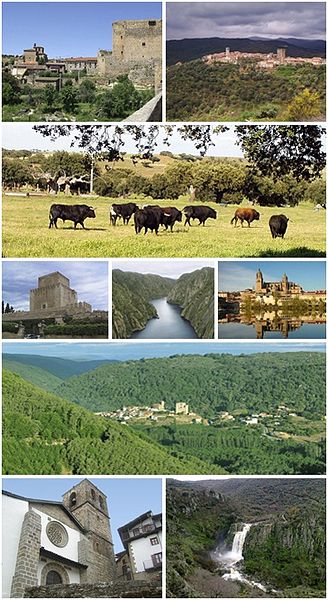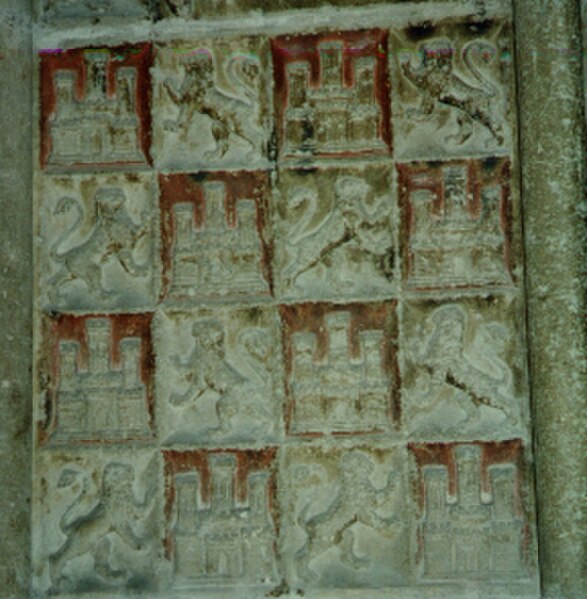Salamanca is a province of western Spain, in the western part of the autonomous community of Castile and León. It is bordered by the provinces of Zamora, Valladolid, Ávila, and Cáceres, and on the west by Portugal. It has an area of 12,349 km2 and in 2018 had a population of 331,473 people. It is divided into 362 municipalities, 11 comarcas, 32 mancomunidades and five judicial districts. Of the 362 municipalities, more than half are villages with fewer than 300 people.
From left to right and from top to bottom: Puente del Congosto Castle, Miranda del Castañar, Campo Charro meadow, keep of the castle of Enrique II of Ciudad Rodrigo, the arrivals of the Duero in Aldeadávila de la Ribera, the cathedrals of Salamanca, Montemayor del Río, the Candelario church and the Pozo de los Humos
Castile and León is an autonomous community in northwestern Spain. It was created in 1983 by the merging of the provinces of the historic region of León: León, Zamora and Salamanca with those of Old Castile : Ávila, Burgos, Palencia, Segovia, Soria and Valladolid. The provinces of Santander and Logroño, which until then had been included in the Old Castile administrative division, opted out of this merger and formed the new Autonomous Communities of Cantabria and La Rioja respectively. Condado de Treviño and La Puebla de Arganzón, the two municipalities that make up the Treviño enclave, are geographically surrounded by the neighboring Basque Country Autonomous Community, but belong to Castile and León.
Checkered banner featuring the castle of Castile and the lion of León in the cathedral of Burgos.
Skull number 5 of Homo heidelbergensis. It appeared in the 1992 campaign, extracted from the Atapuerca Mountains.
Bulls of Guisando, in El Tiemblo, Ávila. These verracos, of Celtic origin, are found in many towns of the western half of Castile and León.
Celtiberian castro of Ulaca.





